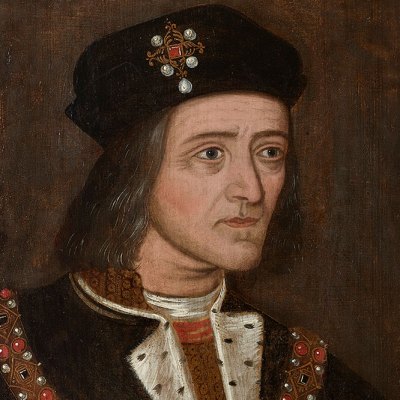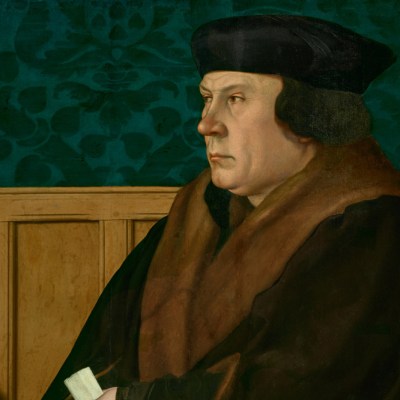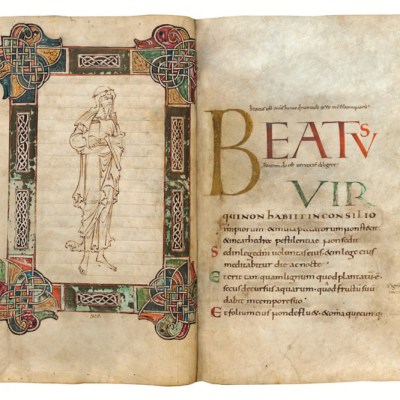A field in Northamptonshire may not sound like promising stomping ground for Tudor art enthusiasts, but, as recently reported in the Sun, in 2017 Kevin Duckett proved otherwise. Buried a few inches beneath the surface he uncovered a solid gold, enamelled figure of a king, two and a half inches high. The object has been at the British Museum since 2018, and is now undergoing further research before it goes to the Treasure Valuation Committee that advises the Department of Culture, Media and Sport. So far, according to a British Museum spokesperson, an expert ‘has examined the piece and identified it as dating from the late Middle Ages’, but some have suggested that the piece may be the sole surviving part of Henry VIII’s crown. Whether or not this turns out to be the case, the figure is still an astonishing find, providing a glimpse of one of the most significant and spectacular art forms of the 16th century: gold-smithery.
The gold figure discovered in Northamptonshire has been identified as Henry VI. Photo: Kevin Duckett
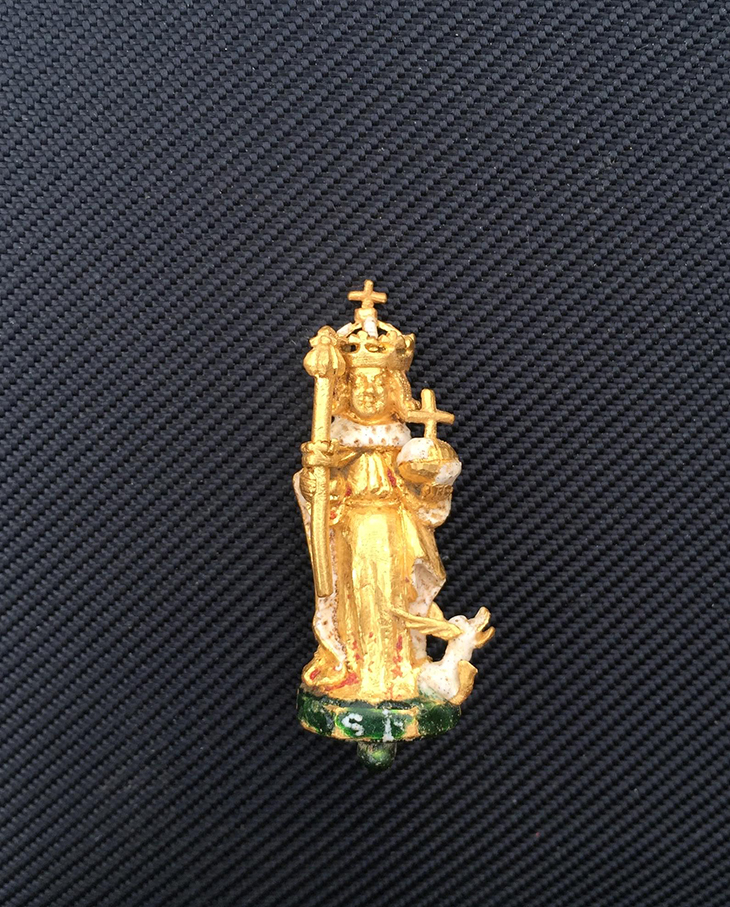
Visitors to Henry VIII’s palaces made a point of commenting on the vast arrays of plate (a generic term for vessels and other wrought objects made of gold and silver), jewels and cloth of gold that provided the splendid backdrop to life at court. Yet such objects barely feature in the shadowy interiors of popular reimaginings of the period. This is due partly to the fact that very few survive; even highly wrought gold was often valued more as bullion than as art, and much of it would have been melted down to make ready cash at moments of national crisis. While some high-status objects, such as the crown, would have escaped such treatment, they too were vulnerable to the vicissitudes of fashion and politics.
It has been suggested that the figurine could have been lost in the field in Northamptonshire in 1645, when Charles I fled after the nearby Battle of Naseby. Charles I was the last monarch to wear the Tudor crown, which was stripped of its jewels and melted down on the orders of Oliver Cromwell, after Charles’s execution. One of our best sources for its original appearance is the portrait of 1631 by Daniel Mytens in the National Portrait Gallery, London, while contemporary inventories provide further details of its iconography, jewels and weight. An inventory of Henry VIII’s jewel house of 1521 describes the crown as featuring images of the Virgin and Child, Saint George and two figures of Christ, but instead of the latter the inventory of 1574 mentions ‘kings’. It is not clear from this whether kings were always depicted on the crown and simply misidentified in 1521, or whether the crown was altered during the Reformation, when some religious iconography was replaced with more acceptable, secular subjects.
King Charles I (1631), Daniel Mytens. National Portrait Gallery, London
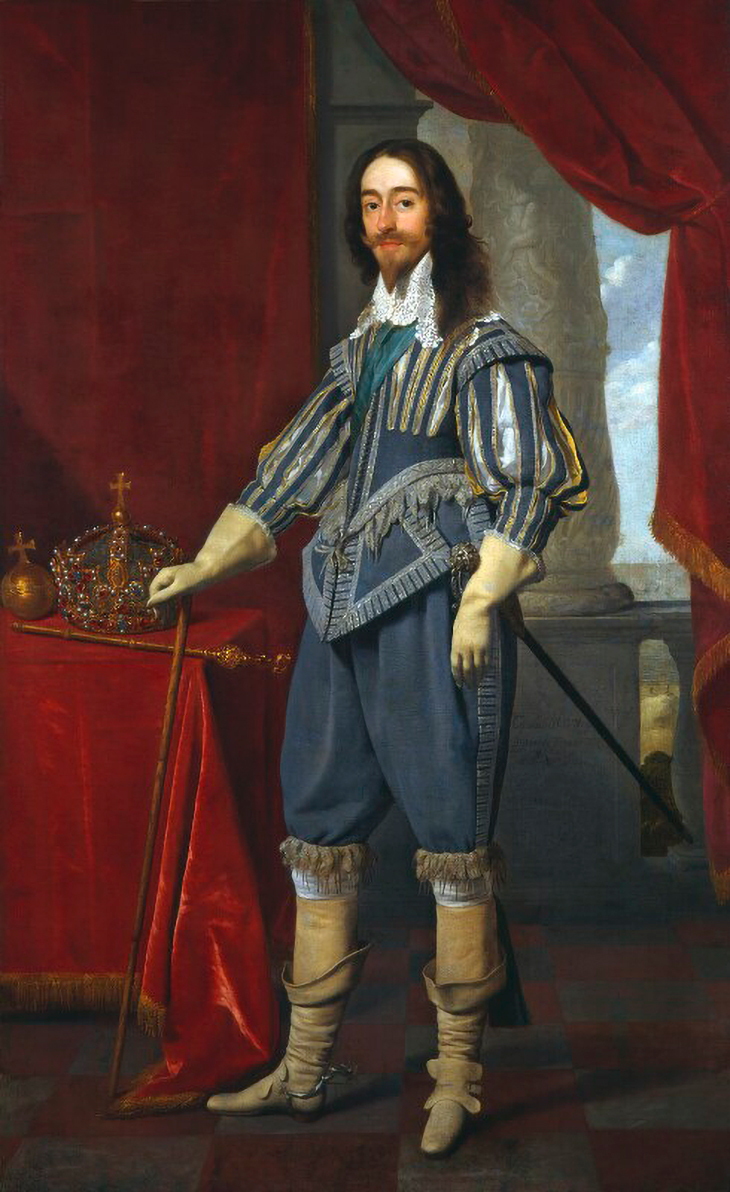
The rediscovered figurine represents Henry VI: the letters SH are inscribed on the bottom, perhaps standing for ‘Sanctus Henricus’, and at his side is a white enamelled animal representing an antelope, one of Henry’s royal animals. Henry VI would have been a highly appropriate figure to embellish the closed crown, which symbolised the Tudor monarchs’ imperial ambitions. In the late 15th century Henry VII had spearheaded a drive to canonise Henry VI, who just happened to be the first Tudor king’s uncle. Miracles were attributed to him and he was often associated with actual sainted monarchs such as Edward the Confessor and Edmund, signifying God’s special relationship with English royalty. Furthermore, as the son of Henry V, victor of the Battle of Agincourt and almost-conqueror of France, he was also the channel through which Tudor monarchs could claim to be not merely kings but emperors: by rights ruling over France as well as England.
As a solid gold, enamelled figure the piece represents an almost entirely lost category of Tudor object: three-dimensional gold sculpture. Before the Reformation, altars in important and wealthy chapels were adorned with standing sculptures of saints and apostles made of gold and silver-gilt: some could be several feet high and weigh as much as a toddler. Surviving objects in international collections, such as the Virgin and Child at the Kimbell Art Museum, give an idea of the appearance of such objects, but examples from within England are exceptionally rare. At just two and a half inches high and an inch wide, the figure from Northamptonshire is at the smaller end of such a scale, the loop on its reverse suggesting a correspondence with the decorative figures added to standing cups, clocks and other high-status objects. A prime example is the Howard Grace Cup, now in the V&A, made in 1525–26 and surmounted by a silver gilt finial in the form of Saint George and the dragon. Perhaps most likely, however, is that it is an elite form of the pilgrim badges issued at Henry VI’s shrine at Windsor, examples of which have been found with the same iconography in pewter.
A recreation of Henry VIII’s crown. © Historic Royal Palaces

The figure of Henry VI stands for an astonishingly vast, and astonishingly vanished, category of late medieval material culture. Whether or not it was ever a part of Henry VIII’s crown, it represents a side of the court that he and his most privileged visitors would undoubtedly have recognised: one that sparkled and glittered in ways now hard for us to imagine. Although small, this figure can help us imaginatively to recover something of that spectacle – and who knows what else might be lying under the earth, waiting for rediscovery?
